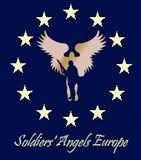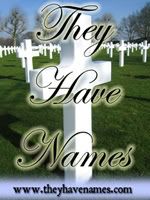While many condemm Hollywoods use of real life events to make movies, I believe that anything that encourages people to take a look at what is happening in the world, to look at their history and to acknowledge the acts of those brave Personnel who have, do or will fight for them is a positive thing. As long as Writers and Directors can stick to the story and base their movies on fact, this can be an important medium for educating people on current world events.
I have actually spoken to 2 Veterans who were present for the battle the Black Hawk Down movie was based on and both verified the accuracy of the movie.
Here are some facts about this mission...
The Battle of Mogadishu or for Somalis Ma-alinti Rangers (“The Day of the Rangers”) was a battle that was part of Operation Gothic Serpent that was fought on October 3 and 4, 1993, in Mogadishu, Somalia, by forces of the United States supported by UNOSOM II against Somali militia fighters loyal to warlord Mohamed Farrah Aidid. The battle is also referred to as the First Battle of Mogadishu to distinguish it from the later Second Battle of Mogadishu. Task Force Ranger, which consisted of an assault force made up of Army Delta Force, 4 US Navy SEALs, and Ranger teams, an air element provided by the 160th Special Operations Aviation Regiment, and members of the Air Force Pararescue/Air Force Combat Controllers, executed an operation which involved traveling from their compound on the outskirts of the city to capture leaders of Aidid's militia. The assault force was composed of nineteen aircraft, twelve vehicles and 160 men. During the operation, two U.S. MH-60 Black Hawk helicopters were shot down by rocket-propelled grenades, and three others were damaged. Some of the soldiers were able to evacuate wounded back to the compound, but others were trapped at the crash sites and cut off. An urban battle ensued throughout the night. Early the next morning, a joint task force was sent to rescue the trapped soldiers. It contained soldiers from Pakistan, Malaysia, and U.S. soldiers of the 10th Mountain Division. They assembled some 100 vehicles, including Pakistani tanks (American-made M48s) and Malaysian Condor armored personnel carriers, and were supported by U.S. A/MH-6 Little Bird, and MH-60 helicopters. This task force reached the first crash site and led the trapped soldiers out. The second crash site was overrun and pilot Mike Durant, the lone surviving American, was taken prisoner but later released. Somali casualty figures are unknown, but American estimates are that between 1,000 and 1,500 Somali militiamen and civilians lost their lives in the battle, with injuries to another 3,000-4,000. The book Black Hawk Down: A Story of Modern War estimates more than 700 Somali militiamen dead and more than 1,000 wounded. Eighteen American soldiers died and 73 were wounded (another American soldier, Delta team leader SFC Matt Rierson was killed in a mortar attack two days later). Among UN forces, 1 Malaysian soldier died and 7 were wounded, along with 2 Pakistanis. To read the links go Here |
Background to the battleIn January 1991, the dictator of Somalia, Mohammed Siad Barre, was overthrown by a coalition of opposing clans, called the United Somalia Congress. After this revolution, the coalition divided into two groups. One was led by Ali Mahdi Muhammad, who became president; and the other, by Mohammed Farah Aidid. In total, there were four opposing groups: the United Somali Congress (USC), Somali Salvation Democratic Front (SSDF), Somali Patriotic Movement (SPM), and Somali Democratic Movement (SDM), which continued to fight over the domination of Somalia. In June 1991, a ceasefire was agreed to, but failed to hold. A fifth group, the Somali National Movement (SNM), had already seceded from the northwest portion of Somalia in June. The SNM renamed it the Somaliland Republic, with its leader Abdel-Rahman Ahmed Ali as president. To read all of this and follow the links go Here |
Operation Gothic Serpent
 Map of key sites in Mogadishu during the battle On October 3 1993, Task Force Ranger, a U.S. Special Operations Forces composed mainly of Rangers, Delta Force (1st SFOD-D) operators, and aviation support from the 160th Special Operations Aviation Regiment (Airborne) (the Night Stalkers), attempted to capture Aidid's foreign minister, Omar Salad Elmi, and his top political advisor, Mohamed Hassan Awale[2]. The plan was to fast rope from hovering MH-60 Black Hawk helicopters, capture the targets, and load them onto a ground convoy for transport back to the U.S. compound. Four Ranger chalks, also inserted by helicopter, were to provide a secure square perimeter on the four corners of the operation's target building. Go Here to read more and follow links |
Links with al-QaedaThere have been allegations that Osama bin Laden's Al-Qaeda movement was involved in training and funding of Aidid's men. In his 2001 book, Holy War, Inc., CNN reporter Peter Bergen Four and one half years after the Battle of Mogadishu, in an interview in May 1998 [2], bin Laden disparaged the withdrawal of U.S. troops from Somalia, after eighteen American soldiers were killed and two of them had their bodies dragged through the streets. Some interpret his statements[citation needed] to mean that these events inspired his elaboration of later large-scale terrorist actions such as the the bombing of U.S. embassies in Kenya and Tanzania, Khobar Towers, USS Cole, and the 9/11 attack Go Here to follow links |
United States Casualties
| Name | Action | Medal |
|---|---|---|
| Delta Force | ||
| SFC Randy Shughart | killed defending the crew of Super Six 4 (Michael Durant) | Medal of Honor (posthumously) 1 |
| MSG Gary Gordon | killed defending the crew of Super Six 4 (Michael Durant) | Medal of Honor (posthumously) 1 |
| MSG Tim "Griz" Martin | killed on the Lost Convoy | |
| SFC Earl Fillmore | killed moving to the first crash site | |
| SSG Daniel Busch | crashed on Super Six 1 and was killed defending the downed crew | Silver Star |
| SFC Matt Rierson | killed on Oct. 6 by a mortar which landed just outside the hangar | |
| 160th SOAR (Nightstalkers) | ||
| CWO Raymond Frank | copilot of Super Six 4 | Silver Star, Air Medal with Valor Device |
| SSG William Cleveland | crew chief on Super Six 4 | Silver Star, Bronze Star, Air Medal with Valor Device |
| SSG Thomas Field | crew chief on Super Six 4 | Silver Star, Bronze Star, Air Medal with Valor Device |
| CWO Clifton "Elvis" Wolcott | pilot of Super Six 1 and died in crash | Distinguished Flying Cross, Bronze Star, Air Medal with Valor Device |
| CWO Donovan Briley | copilot of Super Six 1 and died in crash | Distinguished Flying Cross, Bronze Star, Air Medal with Valor Device |
| 75th Ranger Regiment | ||
| SGT Casey Joyce | killed on the Lost Convoy | Bronze Star with Valor Device |
| SPC James Cavaco | killed on the Lost Convoy | Bronze Star with Valor Device |
| CPL Jamie Smith | bled to death with the pinned-down force around crash site one | Bronze Star with Valor Device |
| SGT Dominick Pilla | killed on Struecker's convoy | Bronze Star with Valor Device |
| PFC Richard Kowalewski | killed on the Lost Convoy | Bronze Star with Valor Device |
| SGT Lorenzo Ruiz | killed on the Lost Convoy | Bronze Star with Valor Device |
| 10th Mountain Division | ||
| SGT Cornell Houston | killed on the rescue convoy | Bronze Star with Valor Device, De Fleury medal |
| PFC James Martin | killed on the rescue convoy | Purple Heart |
Link
While many would disagree, I believe there is a chance that these movies have the potential to provide an effective tool to assist in educating people to the hard work, sacrifice and dedication of our Military Personnel.
3 of my personal favourites are Gallipoli, The Lighthorseman and Kokoda, all based on the Australian forces in numerous battles. After much research inspired by watching these movies I learnt some incredible facts about my countries Military History.
So, while I don't necessarily agree with taking the movie as gospel, I do believe that if it encourages people to research facts, they can prove an effective tool. Often people don't know exactly what to research and these movies give enough detail to allow for searches.
A_C





1 comment:
WoW A-C!!!! Wonderful work, as usual! The ammount of research and crosschecking that you put into this is evident and impressive.
Now if the media did more than o tenth of this....
I love reading your work when your passion runs with it!.
ChrisG
Post a Comment